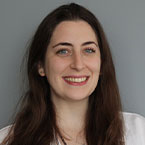By: Michelle Han, MD & Marissa Di Giovine, MD, FAAP
Seizures are sudden events that cause temporary changes in physical movement, sensation, behavior or consciousness. They are caused by abnormal electrical and chemical changes in the brain.
Not every child who has seizures is diagnosed with epilepsy. Here is what parents need to know about seizures, how to help someone who is having one, and when a child may be diagnosed with epilepsy.
Are there different types of seizures?
There are many different types of seizures. Some last for only a few seconds, while others may last longer. The specific type of seizure a person has depends on what part of the brain is involved and how the seizure spreads.
Common seizure types
Doctors divide seizures into two basic
types based on where in the brain the seizure starts. These include:
Generalized onset seizures that start with seizure activity in the whole brain all at once.
Focal onset seizures that start with seizure activity in one specific part of the brain.
Common generalized onset seizures
Generalized tonic-clonic seizures (previously called "grand mal seizures") involve abnormal electrical activity in the whole brain. They are the most dramatic type of seizure; they cause rhythmic and sometimes violent jerking movements in both sides of the body with loss of consciousness. These seizures usually last for 2 to 3 minutes and will almost always end on their own.
Absence seizures
(previously
called "petit mal seizures") are very short episodes with a vacant stare or a brief
(few seconds) lapse of attention. They may also include other subtle symptoms like eyelid fluttering, rapid eye blinking or lip smacking. These occur mainly in school-aged children and may be so subtle that they aren't noticed until they begin
affecting schoolwork.
Focal onset seizures
Focal onset seizures (previously called "complex partial seizures") involve abnormal electrical activity in one part of the brain. During these seizures, a person may be aware of what is going on (called a "focal aware seizure"), or they may not be aware of what is happening
(called a "focal seizure with impaired awareness").
Regardless of whether the person is aware of what is going on during a focal onset seizure, they may have a variety of other symptoms. The specific symptom will depend on what part of the brain is involved in the seizure. Examples include rhythmic jerking movements in one side of the body; random, repetitive movements like wringing the hands or walking slowly in circles; or having an unusual sensation in one part of their body.
In some instances, a focal seizure can progress to a generalized tonic-clonic seizure.
What is epilepsy?
The term
epilepsy is used to describe seizures that occur repeatedly over time without something that is provoking them, such as an
acute illness with fever, or other medical conditions.
A doctor would likely diagnose a child with epilepsy if the following were true:
If my child is diagnosed with epilepsy, what happens next?
If epilepsy is diagnosed, your child usually will be placed on an anti-seizure medication. They also may need further testing, such as EEGs, brain imaging, or genetic testing. Medication usually is continued until there have been no seizures for two years.
Other disorders that can look like seizures
Some children experience episodes that might resemble seizures but are really not.
Examples include:
These may occur just once or may happen many times. Although these episodes may resemble seizures, they are not seizures and may require different diagnostic tests and treatment.
What to do if your child is having a seizure
Most seizures will stop on their own and do not require
immediate medical treatment. However, there are ways you can keep them safe and things you can do if the seizure does not stop on its own.
Immediate steps to keep your child safe:
Move them to a safe space to prevent them from falling or hitting things
Lay your child on their side so they will not choke if they vomit
Do not put anything in their mouth
Do not hold them down
If the seizure stops within five minutes, call your pediatrician immediately.
If the seizure does not stop within five minutes or is unusually severe
(difficulty breathing, choking, blueness of the skin, having several in a row),
call 911 for emergency medical help.
Remember
As frightening as seizures can be, the likelihood that your child will have another one goes down as they get older. Unfortunately, a great deal of misunderstanding and confusion about seizures still exists. That is why it is important that your child's
friends and teachers become educated about their condition.
If you need additional support or information, consult with your pediatrician or contact your local or state branch of the
Epilepsy Foundation of America.
More information
About Dr. Han
 Michelle Han, MD, is a pediatric neurologist currently in her final year of residency at the Children's Hospital of Philadelphia. Next year, she will be completing a fellowship in epilepsy at the Children's Hospital of Philadelphia. She is a member of the American Academy of Pediatrics Section on Neurology. Michelle Han, MD, is a pediatric neurologist currently in her final year of residency at the Children's Hospital of Philadelphia. Next year, she will be completing a fellowship in epilepsy at the Children's Hospital of Philadelphia. She is a member of the American Academy of Pediatrics Section on Neurology.
|
About Dr. Di Giovine
 Marissa Di Giovine, MD, FAAP, is a Pediatric Neurologist who subspecializes in epilepsy. She is an Associate Professor of Clinical Neurology at the University of Pennsylvania's Perelman School of Medicine and is an active member of the Pediatric Regional Epilepsy Program at the Children's Hospital of Philadelphia. She is an Advisory Committee member of the National Coordinating Center for Epilepsy, a member of the American Academy of Pediatrics Section on Neurology, and a founding member of the American Academy of Pediatrics' Committee on Mentorship. Marissa Di Giovine, MD, FAAP, is a Pediatric Neurologist who subspecializes in epilepsy. She is an Associate Professor of Clinical Neurology at the University of Pennsylvania's Perelman School of Medicine and is an active member of the Pediatric Regional Epilepsy Program at the Children's Hospital of Philadelphia. She is an Advisory Committee member of the National Coordinating Center for Epilepsy, a member of the American Academy of Pediatrics Section on Neurology, and a founding member of the American Academy of Pediatrics' Committee on Mentorship.
|